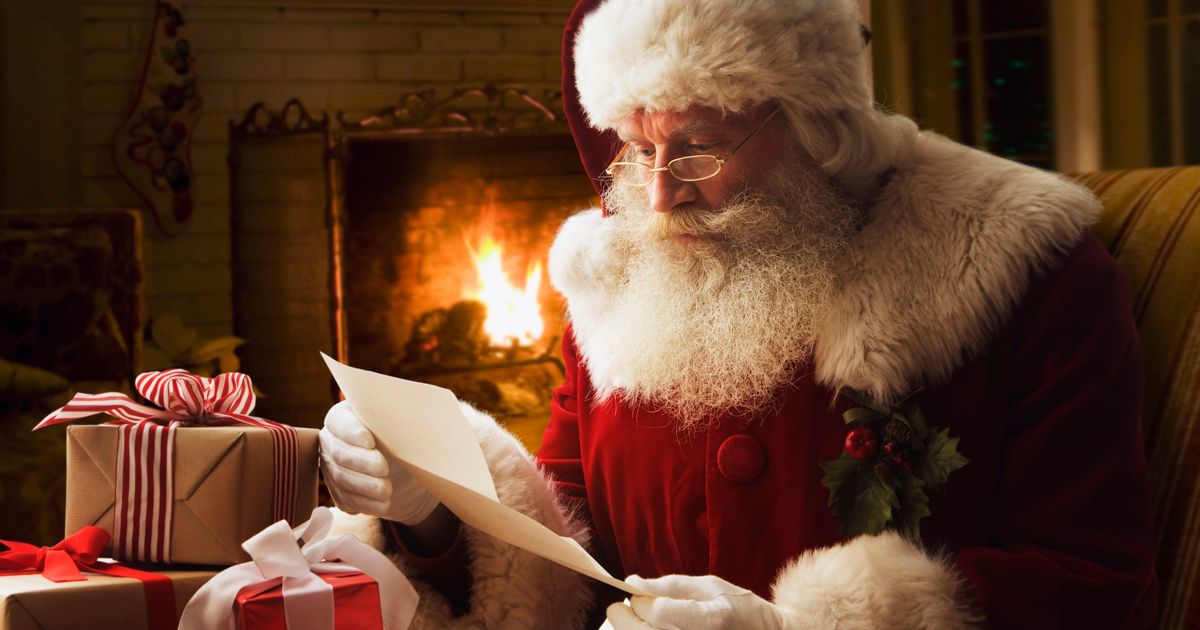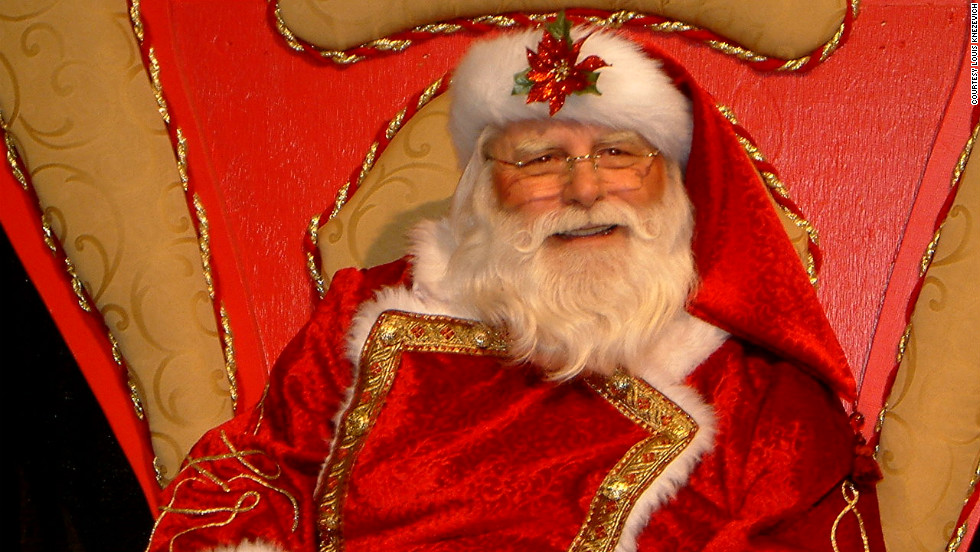
8. AND SENIORITY HELPS.

The more experience a Santa has under his belt, the bigger his paycheck. “We always look for experience,” says Rosenquist. One 18-year veteran St. Nick said he could make $30,000 in one season.
For some comparison: according to a cheeky report from insurance information site Insure.com, the real Santa Claus would earn roughly $140,000 a year if he were compensated for all the work he does, including overseeing the toy factory and piloting the sleigh on Christmas Eve.
9. THEY MIGHT KNOW SIGN LANGUAGE.
Noerr teaches Santas-in-training key ASL gestures so they can communicate with deaf children. They’re also advised to learn basic Spanish. Rosenquist says the demand for Santas of different races and backgrounds is growing. “We are in a lot of markets that are heavily Hispanic, so having bilingual Santas is of supreme importance,” she says.
10. THERE’S A SECRET SANTA GREETING.
In public, Santas speak in code to one another as a show of camaraderie. “I’ll go up and ask him if he’s being good this year,” says Holland. “That’s a giveaway.” Or, if a Santa lookalike answers to “Brother In Red,” you know you’re talking to a St. Nick.
11. A ROUND BELLY IS NOT REQUIRED.

“You don’t necessarily have to have the belly full of jelly,” Rosenquist says. “We don’t measure our Santas by their waist, we measure them by their hearts.” Noerr’s training program actually includes a session on how to eat properly and avoid the health risks that come with being Santa-sized, like diabetes and heart disease. If Santa needs a bigger belly to be convincing, he can be “enhanced” with padding.
Some Santas also wear makeup to maintain a rosy glow. “Number 30 rouge for the cheeks and maybe a little touch on the nose to give him a little bit of weathered look,” one actor told This American Life.
12. CONDIMENTS ARE TO BE AVOIDED.

“If he’s presenting that day, it’s pretty much just water and sandwiches with no ketchup or mustard in them,” says Carol Hildreth. “Otherwise the beard gets dirty.” And nobody wants Santa all up in their face if he’s got bad breath, so good Santas keep breath mints on them at all times. Robert adds an extra special touch: His beard oil is peppermint-scented.
13. THEY HAVE TO STUDY.
“One of the things you have to have at your fingertips at all times is all the culture that goes with Santa,” says Sheehan. This goes way beyond being able to recite the names of Santa’s reindeer. Sheehan tries to keep up with every new movie or TV show in which Santa makes an appearance and memorize the plot so he’s not caught off guard by an inquisitive child. “You could be blown away by a new movie out this season that you haven’t seen yet, but the kid has like six times,” Sheehan explains. “They’re asking details about what happened in the movie and you don’t know what’s going on.”
Santa also has to know all the latest toys—after all, he makes them. “I go through the toy catalogs every year,” says Sheehan. “In a nutshell, it’s staying current. Like any dentist or doctor has to read professional journals, it’s the same with us but we have to stay up on everything that has to do with Christmas.”
14. “I’LL ASK MRS. CLAUS” IS CODE FOR “I DON’T WANT TO ANSWER THAT.”
Kids say the darndest things on Santa’s knee, and no amount of studying can prepare a Kris Kringle impersonator for all the odd questions or bizarre requests. You know you’ve stumped Santa when he brings up the wife.
“I blame a lot on Mrs. Claus,” says Holland. “If anything comes up that’s questionable, I say ‘I’ll have to check with Mrs. Claus about that.’ It really defuses a lot of skepticism.”
But Mrs. Claus does more than just take the blame for Santa’s shortcomings. She often helps shy kids feel more comfortable. “Sometimes the little ones are afraid of the big guy in the red suit and the beard, but they’ll come to someone who looks like a grandma,” says Carol Hildreth. “So they’ll sit on my lap and then talk to Santa.”
